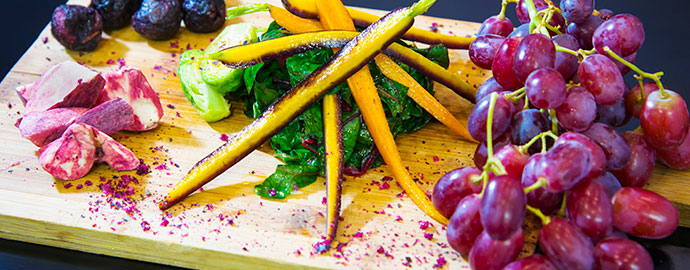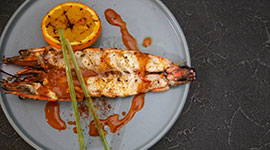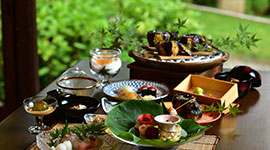
Global Kitchen: Series 5 -Australia-
FRESH FROM THE FARMQ: What is "Taste Australia"?
MTaste Australia is the national brand that represents the Australian horticulture industry and aims to support and drive demand for fresh produce through a range of activities in key export markets including Japan such as trade shows and retail marketing campaigns.
Q: Please tell us about yourself and you rmission at "Taste Australia".
 As the Trade Events Manager I work with fruit and vegetable growers and industry to attend a number of trade shows around the world including Foodex. Japan is a key market for Australia and this year our delegation almost doubled with 40 delegates representing 27 businesses and industries. Foodex provided growers and exporters with the opportunity to understand the market, meet potential buyers and engage with existing buyers and other food producers.
As the Trade Events Manager I work with fruit and vegetable growers and industry to attend a number of trade shows around the world including Foodex. Japan is a key market for Australia and this year our delegation almost doubled with 40 delegates representing 27 businesses and industries. Foodex provided growers and exporters with the opportunity to understand the market, meet potential buyers and engage with existing buyers and other food producers.Q: What are the main products which are imported from Australia to Japan?
Japan is a very important market for Australia and is our third-largest export market. Enhancing the trade relations is the Japan-Australia Economic
Partnership Agreement (JAEPA) which allows improved access for goods and services including a large range for fresh fruit and vegetables.
Australia exported just under AU$204 million* of fresh fruit, vegetables and nuts to Japan in 2017-18 with oranges, macadamias, table grapes, asparagus, almonds and potatoes proving to be our main export products into the Japanese market.
*Source: IHS Global Trade Atlas (2019)
Q: What do you see as chances (opportunities) and difficulties of the Japanese market?
FJapan is a very competitive market and buyers can be very price sensitive. Consumers are eating less fresh fruit and vegetables and looking for more convenient and ready-to-eat products. In the short term, these will prove to be challenges along with the declining population growth in Japan.
However, we see opportunities for all of our products as Japanese production of fresh produce is in decline. Value-added products are also becoming increasingly important and easy to prepare products like cauliflower rice and zucchini noodles will do well in Japan. Australia for the first time can send avocados to Japan – avocado is the new tuna – and it is growing in popularity as the flavor profile matches well with Japanese cuisine. There are a multitude of opportunities in Japan over the long-term – and we need to continually build our brand and reputation among consumers and be innovative and adaptive.
Q: What are your plans and strategies in order for your products to take further root into Japanese market?
Education is key for consumers– we need to provide them with a reason to buy our products and ideas about how to cook and use them. We will continue to attend trade shows like Foodex to build relationships with our key buyers and importers, and also undertake Taste Australia retail marketing campaigns to promote our products in-store.
Q: Can you tell us one or two typical Australian dishes?
We are a very multicultural country – so we have a very broad range of dishes from a multitude of countries to choose from. With our beautiful weather and lifestyle, we
do enjoy a barbeque (barbie) – cooking up the traditional meat, sausages, vegetable skewers and seafood – served with an abundance of salad – we grill fruit like nectarines, bananas and mangoes on the barbie as well. Anything goes!
Q: Can you also tell us about Australian alcoholic beverages in general?
Australia produces some of the best wine, cider, beer and gin in the world (of course we are not biased). Craft beer and botanical gin in particular has become very popular in recent years.
Q: Last question. Did you try any Japanese cuisines during your stay this time?
We all loved Japanese food – we tried sushi, sashimi, teppanyaki, Michelin-star ramen, tempura and an array of fabulous delicacies from a few izakayas. It was totally food heaven.




